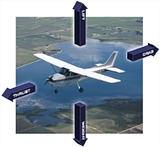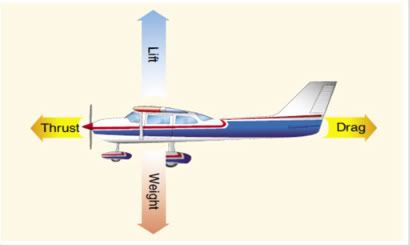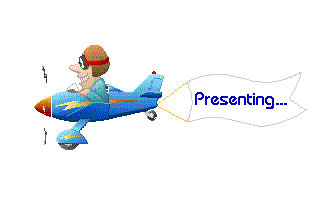 There are 4 fundamentals of flight that are imposed on every plane in flight. These four forces acting on an aircraft in straight-and-level, unaccelerated flight are thrust, drag, lift and weight. I will talk about each and explain how these act on the plane. They are defined as follows:
There are 4 fundamentals of flight that are imposed on every plane in flight. These four forces acting on an aircraft in straight-and-level, unaccelerated flight are thrust, drag, lift and weight. I will talk about each and explain how these act on the plane. They are defined as follows:THRUST
Thrust is that force that causes a plane to move forward. It is produced by the power plant/propeller or rotor. It opposes, overcomes, and is opposite of drag. As a general rule, it acts parallel to the longitudinal axis. (More on axis in the next blog).
DRAG
Drag is the rearward, retarding force caused by the disruption of airflow over the wing, rotor, fuselage, and other objects that protrude from the plane. As mentioned earlier, drag and thrust are opposites, and acts rearward parallel to the relative wind.
LIFT
Lift opposes the downward force of weight, is produced by the effect of the air acting on the wings, and acts perpendicular to the flight path.
WEIGHT
Weight is the combined load of the aircraft itself, the crew, the fuel, and cargo. Weight pulls the plane downward because of the force of gravity. It acts opposite of lift, and acts vertically downward through the CG (center of gravity).

In steady flight the sum of all forces is always zero. It does not mean that the four forces are equal. It means the opposing forces are equal to each other and therefore cancel each other out. See figure above.
So in steady, level, flight the sum of all upward forces (lift) equals the sum of all downward forces (weight).
And the sum of all forward forces (thrust) equals the sum of all backward forces (drag).
For an aircraft to move forward thrust must be greater than drag. As the plane continues to move forward and gains speed, then at some point thrust and drag will be equal. Which means that to maintain constant airspeed, thrust and drag are equal. For a constant altitude, lift and weight must be equal.
If thrust is less than drag the plane will slow down, but once thrust is greater than drag , the plane speeds up.


No comments:
Post a Comment